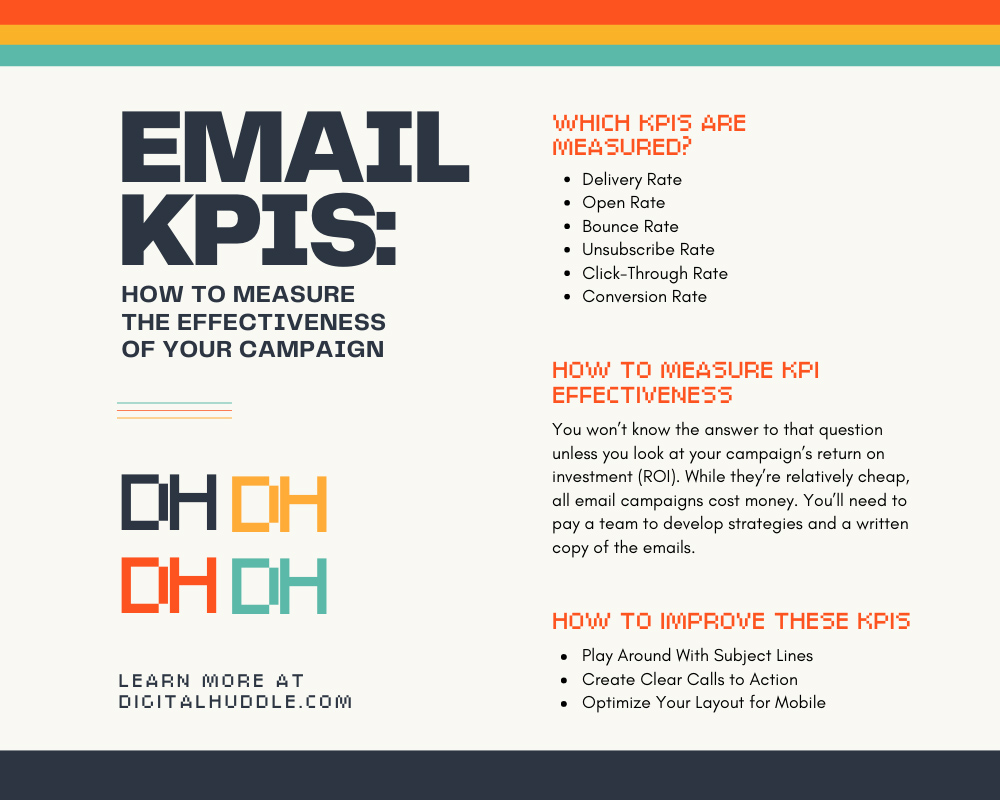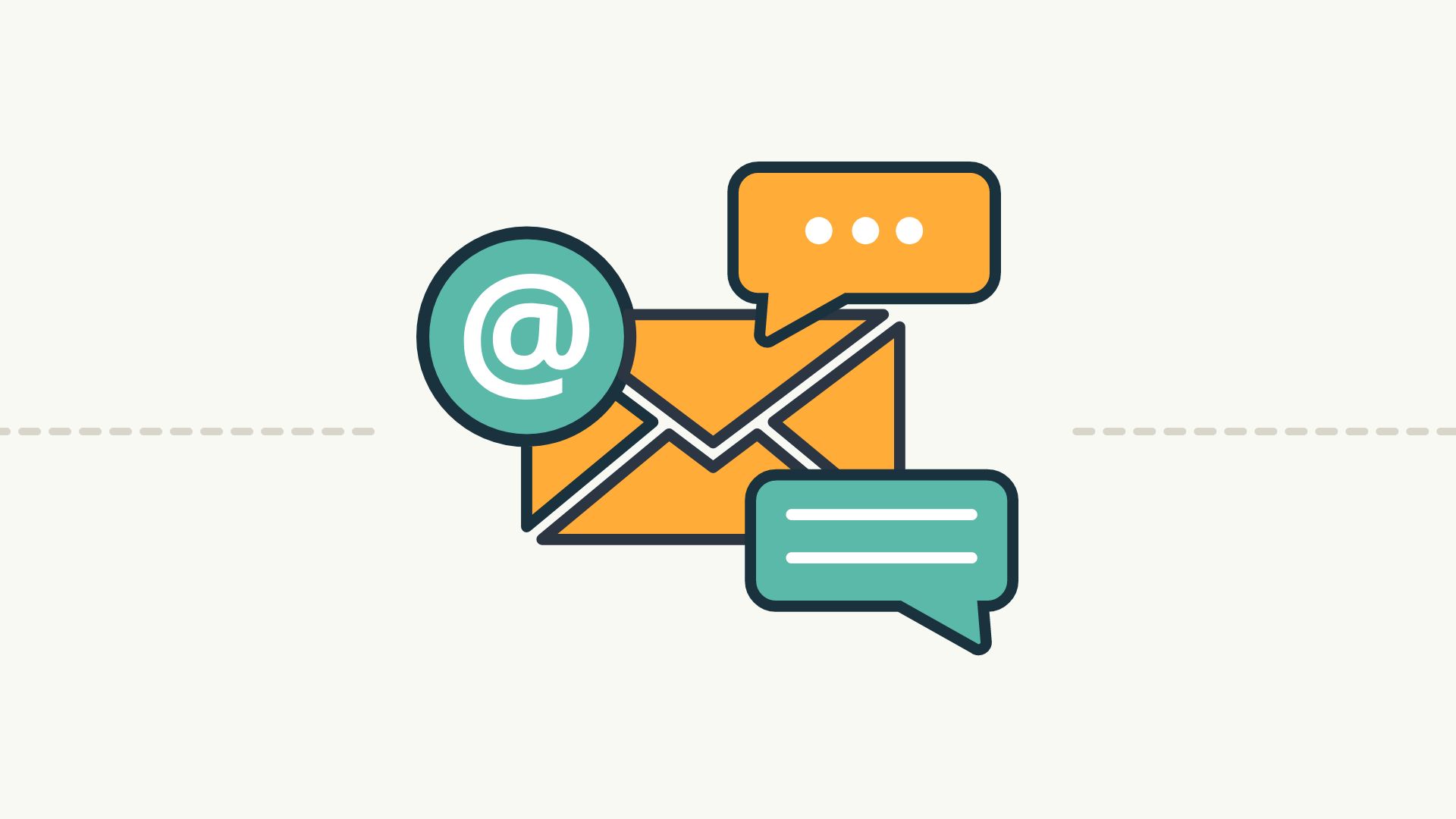Email KPIs: How To Measure the Effectiveness of Your Campaign
KPIs are a vital component of any successful email marketing campaign. If you don’t know how to use them to measure effectiveness, we’re here to help.
When it comes to making decisions for a company, regardless of size or success, knowing the stats of what you do is crucial. While these hard numbers might be obvious in certain areas of business, such as accounting and finance, they aren’t as easy to identify in something like marketing. Before advertising on the internet became an option, having hard stats wasn’t even possible. You just had to track if sales increased after a big marketing change and assume the shift came from your ads or commercials.
Thanks to the trackability of internet actions, though, knowing the key performance indicators (KPIs) of your marketing efforts is easier than ever. Unfortunately, not everyone utilizes them as they should, especially regarding email. That’s why we’re here to cover the most vital email KPIs for your marketing campaign and how to measure how effective they are.
Which KPIs Are Measured?
Before we get into measuring the effectiveness of KPIs, we need to know which ones exist for email specifically. If you’ve worked with KPIs in other formats, you’ll recognize most of these, but they vary slightly when it comes to measuring emails.
Delivery Rate
Unlike snail mail, emails have the inherent bonus of not getting lost in the system. While the occasional random server crash can cause some issues, most would assume that the email delivery rate would be around 100 percent.
However, that’s usually not the case. People deactivate old email addresses all the time. In some cases, they can even get away with providing fake ones. Both scenarios lead to your emails not reaching their destination. While this might not sound like a big deal, it can affect a more important KPI that we’ll cover soon.
Open Rate
The next KPI is the open rate. Just because an email is delivered doesn’t mean the recipient will open and look at it. If users can tell they’re not interested in what you’re selling, they probably won’t even bother checking it out.
In many cases, open rates will still be quite high, though, since many people don’t like leaving unread emails in their folders. However, email providers like Google have started making automatic folders that sift out promotional emails, leading to users never even opening them since they’re not in their main feed.
Bounce Rate
Even if you manage to get a lot of people to open your emails, that doesn’t mean your campaign is successful. If people simply open your emails to remove the notification, that will contribute to having a higher bounce rate. If this number gets too high, email providers might start labeling your emails as spam, which means your customers will never see them.
This is where a poor delivery rate can hurt you. While most of your bounce rate will be from people not clicking on any links in your email, some of it will be from undelivered emails. These fall under the classification of a hard bounce rate instead of a soft one, like the other examples. But undelivered emails will hurt your campaign, nonetheless.
Unsubscribe Rate
The only thing worse than a high bounce rate is a high unsubscribe rate. If this number is too large, that means a large portion of your consumer base has become fed up with your emails. They might find them misleading, spammy, or generally annoying. However, regardless of the reason, you’ll need to make some changes if this KPI keeps climbing.
Click-Through Rate
To avoid a high bounce rate, you want to have a sufficient click-through rate (CTR). This is when email viewers actually click on the links in your message to learn more or make a purchase. It’s important to note that this doesn’t mean they converted once on your site. But they at least made it past the initial email, which is a big win for most email campaigns.
Conversion Rate
The conversion rate quickly follows the CTR. If the people who went to your site bought something or performed another desirable action that you pushed for, that counts as a conversion. This is the number you want to be as high as possible. But of all the positive outcomes, this one will always be the lowest. The reason for this is that a specific chain of events must occur to lead to a conversion.
Which KPIs Are the Most Important?
While we’d definitely recommend that you keep track of all of these KPIs, you’ll want to keep a closer eye on a few specific ones due to their importance. You should always be aware of open, click-through, and conversion rates. The bounce rate is also important, but you could get a rough estimate of it by subtracting your CTR from your open rate.
With these three KPIs, you can determine how many people look at your emails, how many of them make it to your site, and how many of that group perform the desired action. You can then use this information to identify your weaknesses in the process.
How To Measure KPI Effectiveness
With that data in mind, you could theoretically call an email campaign a success or failure, but that wouldn’t mean much in the grand scheme of things. Sure, a particular campaign may have performed better than the last three combined, but does that mean it was effective and benefited your company?
You won’t know the answer to that question unless you look at your campaign’s return on investment (ROI). While they’re relatively cheap, all email campaigns cost money. You’ll need to pay a team to develop strategies and a written copy of the emails. You’ll also need to pay for whatever programs you use to craft these messages and send them out. If you don’t make enough sales to pay for these costs, then your campaign isn’t that effective.
Fortunately, due to how easy it is to send these messages out, email campaigns tend to achieve positive ROIs most of the time. Once you consistently achieve positive numbers, you can compare your current ROI with past ones to determine their effectiveness.
How To Improve These KPIs
Of course, knowing how to use KPIs to measure the effectiveness of an email campaign is only the starting point. Once you know these numbers, you must learn how to improve them over time. We have a few suggestions to get you started.
Play Around With Subject Lines
Hands down, the most important part of any email is the subject line. Most of the time, this is the only thing people see when they first receive the notification. If this doesn’t draw them in, you’ve already lost.
Luckily, most email programs allow you to send out emails with a variety of subject lines. That means you can test out multiple ideas to see what works and what doesn’t. There’s a lot to know about A/B testing your emails, but by using multiple test runs, you can better understand what kinds of openings your customers respond well to.
Create Clear Calls to Action
Once they’re in, the next essential location to focus on is the call to action (CTA). If your current CTA is unclear or buried at the bottom of your email, then some people might never find it. You’ll want to ensure it has a prominent presence and is very clear about where it will take your customers.
On top of that, you should spruce it up if possible. Using personal info like the recipient’s name or location can increase the chances of your link getting a click from them. If you don’t want to get too personal, you could simply acknowledge that you know they’ve shopped with you before and treat them like a returning customer.
Optimize Your Layout for Mobile
Finally, if you haven’t already taken the time to optimize your emails for mobile, you could be hurting yourself and increasing your bounce rate. A large portion of consumers check their email through their phones these days, and that number is only expected to rise. So if they have trouble reading your message due to the smaller print intended for desktops, you could be losing about half of your potential sales, if not more.

